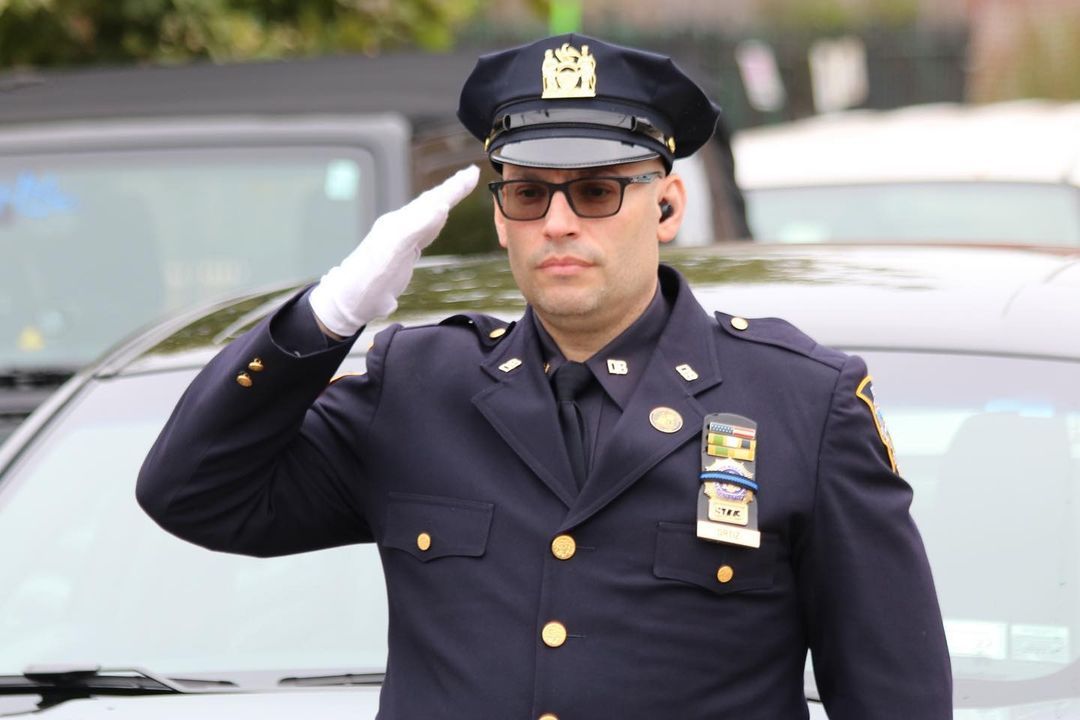The DEA regrets to announce the death of retired Det. First Grade Thomas W. McKenna, who passed away on November 12, 2024. Born and raised in The Bronx, McKenna’s legendary work on many high-profile NYPD cases was memorialized in his 1996 book Manhattan North Homicide, co-authored with writer Bill Harrington. McKenna was also an NYPD union representative for 16 years. In year 2000, when he retired, McKenna was the Manhattan North Trustee of the DEA with 35 years on the force. He told The Gold Shield magazine, “I’ve had a good run and have absolutely no complaints. I would never, ever change one thing. I had a ball!” Perhaps a peculiar way to describe the grueling nature of homicide investigation, but McKenna was known for his hard-charging nature and wry sense of humor.
His wake will be held on —
Monday, November 18, 2024
2:00 p.m. to 5:00 p.m.
7:00 p.m. to 9:00 p.m.
Gleason’s Funeral Home
10-25 150th Street
Whitestone, Queens, NY 11357
His funeral service will be held on —
Tuesday, November 19, 2024
10:15 a.m.
St. Luke’s Roman Catholic Church
16-34 Clintonville Street
Whitestone, Queens, NY 11357
Private cremation to follow.
While still in his teens, after graduating high school in 1960, McKenna enlisted for a three-year stint in the United States Army. After his honorable discharge, he entered the Police Academy on February 15, 1965. It was arguable at the time which profession — the military or the police — was more volatile; in the turbulent 1960’s, New York City was a powder-keg of violence: civil unrest; riots; black-outs; “hot summers and short fuses,” as McKenna said.
“But I had a young family to support,” he told The Gold Shield, “and some of my friends had taken the exam. Being a Police Officer was a secure job in those days and it just seemed like the right thing to do at the time.” McKenna was assigned to the Tactical Patrol Force, working the steady 6:00 p.m. to 2:00 a.m. shift on the 4 x 2 chart. Although assigned to the 6 Squad, Manhattan North based “TPF” was a citywide unit and worked in all the boroughs and precincts. The Department would inundate rough areas with manpower to squelch whatever disturbance or crime was developing.
“TPF was nicknamed the ‘Tall Pretty Fellows,’” McKenna related. “You had to be six feet tall to get in,” and McKenna was only 5-feet, 10-1/2-inches. “But I had made four felony arrests while I was still in the Academy: two while I was wearing gray (one arrest was of a guy who had just killed someone. I chased him six blocks until I caught him). The other arrests were for burglary and robbery, and two took place while I was off-duty.” TPF was for cops who were action-oriented and it was where McKenna wanted to be. By the time he left the unit in 1968, he had over 300 collars, but claims, “It was not unusual for TPF at the time.”
McKenna was transferred to the Manhattan North Detective Task Force, and although still a white shield, the Detective Bureau was where he had set his sights since first entering the force.
“My whole career orientation was toward becoming a Detective,” he said, and finally his work on solving a professional caper earned him his dream. The case reads like a Damon Runyon story: A family of crooks-for-hire bought a job to turn over the ultra-chic A La Vieille Russie, the famous, exclusive salon for Russian jewelry and antiques that was for decades located at the Sherry-Netherland on Fifth Avenue. The thieves put everyone who was in the store into the vault. As McKenna and his partner, John McNally, later interviewed the witnesses, McNally noticed a woman’s pocketbook under one of the glass display cases. The Detectives asked if it belonged to anyone. It was recognized as having belonged to a female customer, who witnesses surmised, must have been abducted by the robbers. McNally and McKenna looked through the bag and found the owner’s identification and address. At the woman’s home, they gathered information and realized the heist had been a family affair. It was the daughter’s criminal debut, but she was so preoccupied ogling the dazzling Russian jewels that she forgot to hold on to her handbag. Case closed: McNally got grade and McKenna earned his coveted gold shield on August 6, 1969.
McKenna was assigned to the 34 Squad and for the most part remained there for the next 17 years, except for a brief period when the Department instituted specialization and McKenna was assigned to the 5th Detective District Robbery Squad. But when Precinct Squads returned, McKenna was back with the 34.
“The 1970’s were a rough time for New York City cops,” he recalled, “with the Black Liberation Army ambushing Officers randomly with machine gun fire. They were shooting cops all over Manhattan: on Riverside Drive; in the 32; in Greenwich Village,” he related. But McKenna remained the cool professional and was twice honored by the Precinct’s Community Council with its “Policeman of the Year” award. In 1986, he was chosen to serve in the Manhattan North Homicide Squad and, two months later, on October 24, he was promoted to second grade. In 1992, he was promoted to first grade and remained with the elite Squad until his retirement.
McKenna first became involved with labor activities when in 1984 he was elected by his peers from the 34 to be the union Delegate. In ’86, he became the Manhattan North Homicide Alternate until becoming Delegate in 1990. He was elected Welfare Officer for Manhattan North in 1991, and, in 1993, he moved up to the Borough’s Trustee position, serving in that capacity until his retirement from the DEA and the NYPD in June of 2000.
“I loved the union work,” he said, “and greatly admired Tom Scotto, Jack Healy, and the entire Board of Officers. It’s difficult having to represent all of your members equally,” he said, “and it’s exhausting.” But stamina is one of the requirements for being a Homicide Detective and McKenna never exhibited it more than when he was thrust into the spotlight in the Spring of 1989, during what became known as “the Central Park Jogger case.” The story is but one of the cases McKenna outlined in his book, which was published by St. Martin’s Press. McKenna was approached by the publisher to recall some of the famous cases he and his partners worked on, including: the Robert Chambers’ “Preppie Murder” of 18-year-old Jennifer Levin; the killing of 20th Precinct Sgt. Keith Levine; teacher Jonathan Levin’s murder on the Upper West Side; and other high profile crimes.
Said McKenna about his co-author, “I knew I could work perfectly with writer Bill Harrington when he told me he only worked from 9:00 a.m. until noon, and after that he had two martinis at lunch and called it a day!” After they hit the radio and television circuit for book promotion, McKenna became technical advisor for television’s Inside Edition, where he consulted on homicide cases outside of the NYPD’s jurisdiction.
Retirement didn’t slow him the down, either. His family kept him hopping as Tom and wife Marie had five children and many grandchildren. Det. McKenna also worked as a Confidential Investigator for the Inspector General’s Office for Off-Track Betting.
“All in all,” McKenna told The Gold Shield, “I’ve always loved my jobs. The people, my partners, and the work,” and the secret, he admitted, was not taking the aggravation or the horror home. He thought of himself as a pro who tried not to get too emotionally involved. “You have to keep things in perspective,” he explained, and at the risk of sounding gruesome,” McKenna confessed, he and his colleagues, “shared a laugh every day.”
“No two murders are alike,” he once said, “and frankly, you can’t make this stuff up.” Det. McKenna will be greatly missed.






